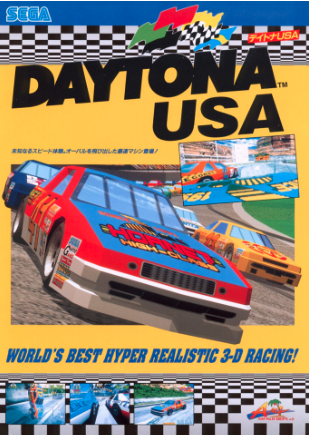In the early mid 1990s, video games were transitioning away from the flat, pixelated sprite art of the past and fully embracing a polygonal future with 3D graphics. In the racing genre, Namco made a declarative statement on the ability for 3D graphics to create a greater sense of realism when the company released Ridge Racer in Japanese arcades in late 1993. Ridge Racer set the bar for 3D racing titles thanks in large part to its graphical presentation, which was absolutely mind-blowing at the time, but it was hardly the first 3D racing title.
In the summer of 1992, Sega’s AM2 development studio released Virtua Racing, a Formula One-style game that featured polygonal graphics achieved by using Sega’s Model 1 arcade board—the same technology that powered Virtua Fighter (1993), Star Wars Arcade (1993), and Wing War (1994). However, Virtua Racing looked antiquated with its single color, flat-shaded polygons paling in comparison to the texture-wrapped cars in Ridge Racer that looked (more) like they could have rolled right off a real track.
Sega desperately wanted to run Namco off the road to keep coins rolling in on their arcade racers. They needed a new game—and fast. What they came up with would require new arcade hardware developed in partnership with General Electric’s Aerospace division, inspiration from NASCAR, and the directorial eye of one of Sega’s up-and-comers, Toshihiro Nagoshi. The result was the arcade smash hit Daytona USA (1994).
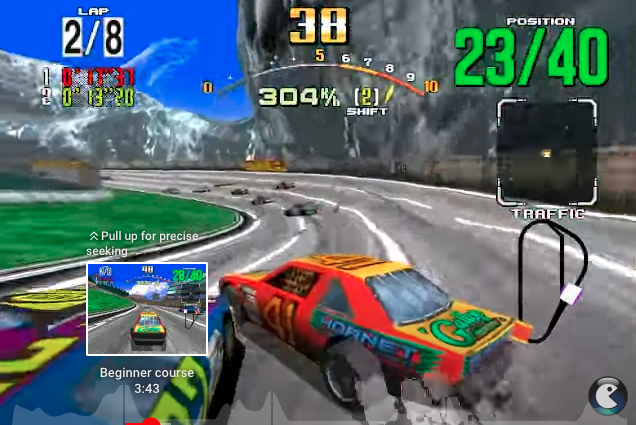





Designed to surpass Ridge Racer, Daytona USA featured three distinct tracks compared to Ridge Racer’s single course with subtle variations. Each track corresponded to a different difficulty with the beginner course, “Three Seven Speedway,” the Daytona International Speedway. The advanced course, “Dinosaur Canyon,” contained a mixture of long straight aways and curves with quick turns. The expert course, “Seaside Street Galaxy,” was the most complicated with constant quick turns and only two laps.
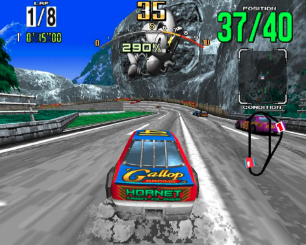


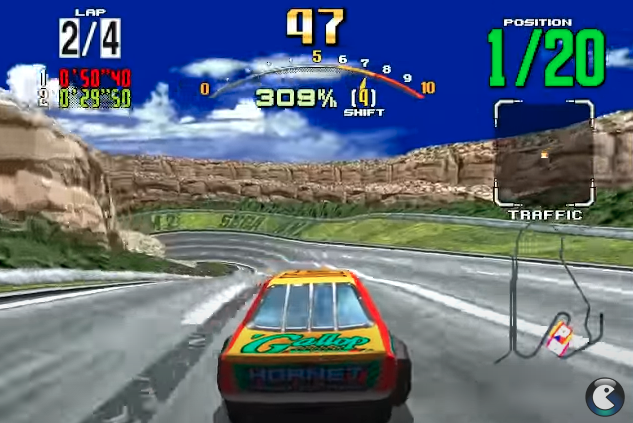


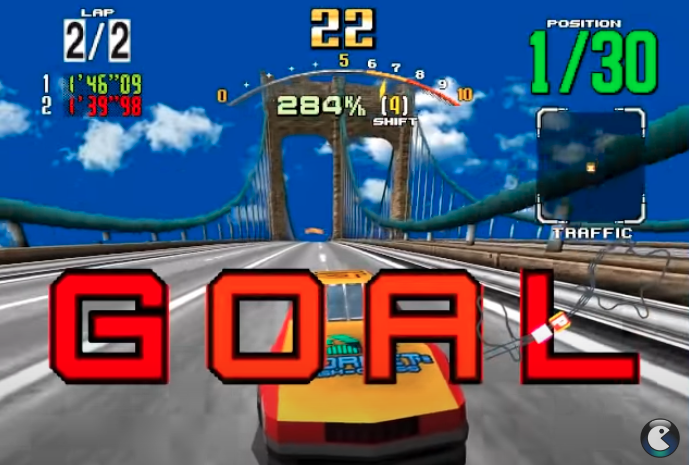


Players rolled through Daytona USA in a stock car known as the “Hornet” that could be viewed from four different camera angles ranging from a first-person view to an extreme zoomed out view from behind the car. Players would race and drift through the courses using a force feedback steering wheel that let players feel crashes and impacts, as well as an H-type shifter. Up to eight players could compete together if enough arcade cabinets were linked together. And as an added bonus, deluxe versions of the Daytona USA arcade cabinet utilized a system of cameras so you could read the other racers’ dismay on their faces as you roared by them.
Daytona USA was the highest-grossing arcade game of 1994 in Japan and cleaned up a ton of quarters across the pond too. A home console version hit the Sega Saturn in 1995, bringing the thrill of the arcade version to living rooms across the world despite inferior graphics. The game would get a few sequels including Daytona USA 2: Battle on the Edge in 1998 and Daytona Championship USA in 2016. The original game was revamped for the Sega Dreamcast console in 2001 under the title Daytona USA 2001.
These days, Daytona USA is remembered not only as Sega’s response to Namco’s Ridge Racer in the ongoing escalation battle for arcade supremacy, but as one of the greatest games of all time.
